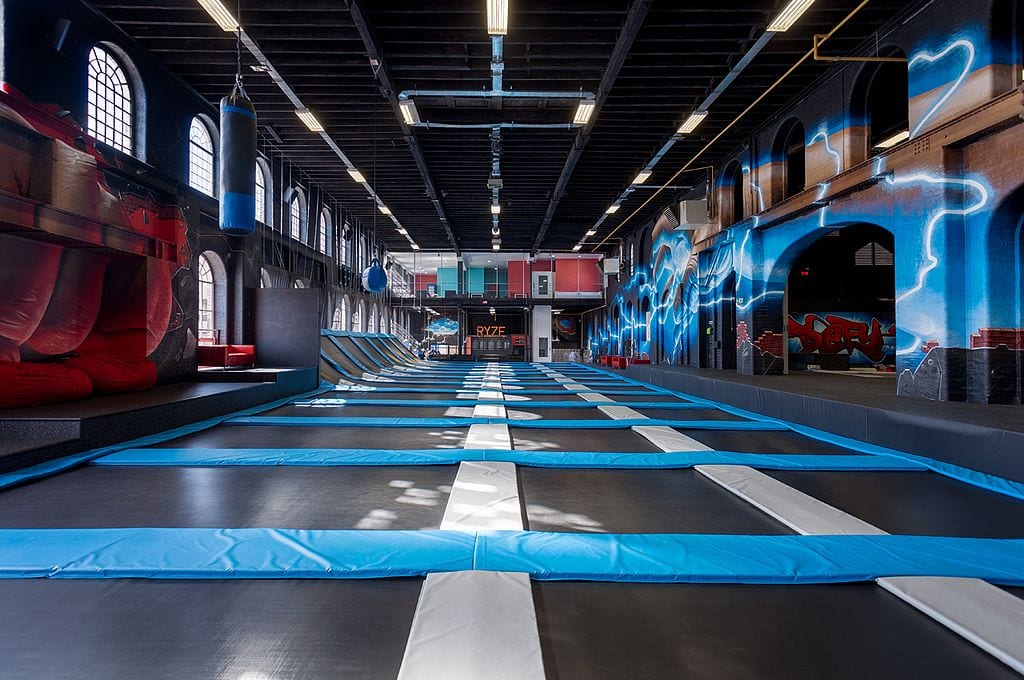The best way to avoid an injury at a trampoline park is to not go to one.
Earlier this year, a trampoline park in Bethlehem, Pennsylvania abruptly closed due to what they called “unforeseen circumstances.” FreeFall Trampoline Park had been in business in Lehigh Valley for eight years as “unforeseen” incident after “unforeseen” incident culminated in more than a couple personal injury lawsuits.
Injuries? Involving a trampoline? Shocking.
One lawsuit claimed an Allentown resident suffered “severe and painful” injuries in a fall through “a large hole and/or tear that was present” in a trampoline. In another, a woman suffered “severe personal injuries” after a platform underfoot “gave out.” FreeFall required that guests sign a waiver “before engaging in any activities or attractions within FreeFall Trampoline Park.” But, as we all well know, those waivers are not always enforceable.
Trampolines don’t have to be damaged to cause injuries. Just Google ‘trampoline injuries’ and you’ll find phrases like, “significant injury”, “I screamed in agony,” and “loses kidney.” Nothing about the closing of FreeFall Trampoline Park should suggest “unforeseen circumstances.” While the space that housed the poorly operated and managed FreeFall has reopened under different owners (presumably a company with stricter safety standards), it should come as no surprise that trampoline parks are a personal injury lawyer’s playground and for good, obvious reasons.
Types of Injuries at Trampoline Parks
You don’t have to think too hard to imagine what kind of injuries you can get bouncing around on a trampoline. A study from 2022 states that “There was an increased likelihood of musculoskeletal and/or orthopedic injuries, lower extremity injur[ies], sprains, and a need for surgery at trampoline centers compared with home trampolines.”
Don’t get excited, home trampoline advocates. That same study also said, “upper extremity injur[ies], concussion[s], and lacerations were less likely to occur at trampoline centers than at home.” You have a menu of injuries to pick from depending on whether or not you want to jump on a trampoline in the comfort of your own backyard or at a glorified kids birthday party venue. Do you want a concussion or a sprained ankle? Jumper’s choice.
The study did conclude that trampoline parks are the more dangerous between the two options. With all those unruly children on a sugar high from birthday cake and soda bouncing around like uncovered popcorn on unregulated equipment known to cause injuries managed by disinterested and underpaid staff, it should be no surprise that people are injured at trampoline parks.
Waivers and Assumptions of Risk
If you were to choose to host your kid’s birthday party at a fracture factory trampoline park, you will be required to sign a waiver. That should be your first clue that it might not be the most child-safe activity, but many dismiss it as a simple precaution. Zip lines are pretty safe, but you will likely have to sign a waiver there as well.
In the case of trampoline parks, the waiver you will be required to sign will state the nature of the activities, the risks involved in those activities, your knowledge of these risks and your desire to take part in them, and the release of liability for the venue should you experience those risks. There’s even a little section about communicable diseases, just for giggles. Some waivers include mandates for arbitration as a means of settling any disputes should they arise.
Everyone generally accepts that liability waivers protect the company from lawsuits. What people generally aren’t aware of is that it is usually a means to intimidate you into not pursuing legal action should something happen under their supervision.
Just because you signed a waiver does not mean that it’s enforceable. Let me say that again. Just because you signed a waiver does not mean that it’s enforceable.
Don’t let the reality of having signed a waiver deter you from filing a personal injury lawsuit against the trampoline park. Just because you said yes to a potentially dangerous activity does not mean that you can’t hold the organizers of said activity accountable. Because you can and, if they’ve been neglectful in their duty to care, you should.
Product and Premises Liabilities Involving Trampolines
The avenue you could pursue in order to hold a trampoline park accountable is through product liability and premises liability. These are common in personal injury cases involving injury on someone else’s property, someone else’s product, or in the case of a trampoline park, both.
Product Liability
If a defective product has led to an injury, then you have just exposed liability for the manufacturers of that product. The most famous example of product liability is probably the McDonald’s Hot Coffee case. Others include the RoundUp weed killer case and the Toyota “sticky” accelerator case. In these cases, a trampoline would be FreeFall’s product and any defection with that product that causes injury opens them up to liability.
Premises Liability
If you are injured while lawfully on someone else’s property then you have just stumbled into premises liability. If you slip on a sidewalk and injure yourself in front of someone’s house, you have fallen on that person’s premises and they are now potentially liable for your injury. If you see a “Wet Floor” sign somewhere, that’s an effort to protect against premises liability. If you are injured at a trampoline park, that can venture into the premises liability world.
If you were to contact personal injury lawyers in Bethlehem for a trampoline-related injury, you should be at least casually versed in product liability and premises liability as you navigate the process of filing a lawsuit.
Common Defenses by Trampoline Parks
You may have a strong case, but there will be defenses made by the trampoline park’s lawyers. And they may be good arguments too. Just because you were injured on someone else’s property due to a defective product doesn’t mean you automatically beat them in court. There is often a battle to avoid liability.
Comparative or Contributory Negligence: A trampoline park may argue that the injured party’s actions contributed to their own injury. If a person is engaging in dangerous behavior contrary to posted rules, such as climbing on a structure not meant for climbing, they may find their claim reduced or even dismissed.
Inadequate Supervision: You better watch them kids. Kids are stupid and will do dumb things that get themselves hurt. It is their parent or guardian’s responsibility to keep those kids from getting themselves hurt. If a parent wasn’t paying attention and a kid got hurt, that could damage any claim you make.
Legal Standards and Key Factors
If the plaintiff in a personal injury case against a trampoline park proves that the defendant owed them a duty of care, breached that duty, and directly caused injury as a result, then a court can award the plaintiff compensatory damages. These damages can cover medical expenses, lost wages, and emotional suffering, or even punitive damages if the defendant acted egregiously.
There are a few key factors that can influence the outcome of a case:
Age of the Victim: Little kids are stupid. They do not do risk assessments and hurt themselves all the time. Courts factor this in as they make decisions on awards.

Safety Measures in Place: A court will consider the amount of safety measures in place such as nets and padding and whether or not those safety measures are maintained.
Extent of Injury: The more severe the injury, the greater the award will likely be. Especially if those injuries develop a long-term, or permanent, disability requiring extensive lifelong medical care.
Maybe We Don’t Need Trampolines
The best way to avoid an injury at a trampoline park is to not go to one. Nothing about trampolines suggests safety. Sure, it’s super fun to bounce around like an idiot. But at what cost? Is the brief endorphin rush while bouncing on worn fabric attached to springs worth the fracture? Is your life literally so boring that you’d risk a head injury so you can bounce on a germ-infested trampoline? Trampolines are dangerous and trampoline parks are a house of liability. Maybe we can skip the trampoline park and have Chuck-E-Cheese instead.


Join the conversation!